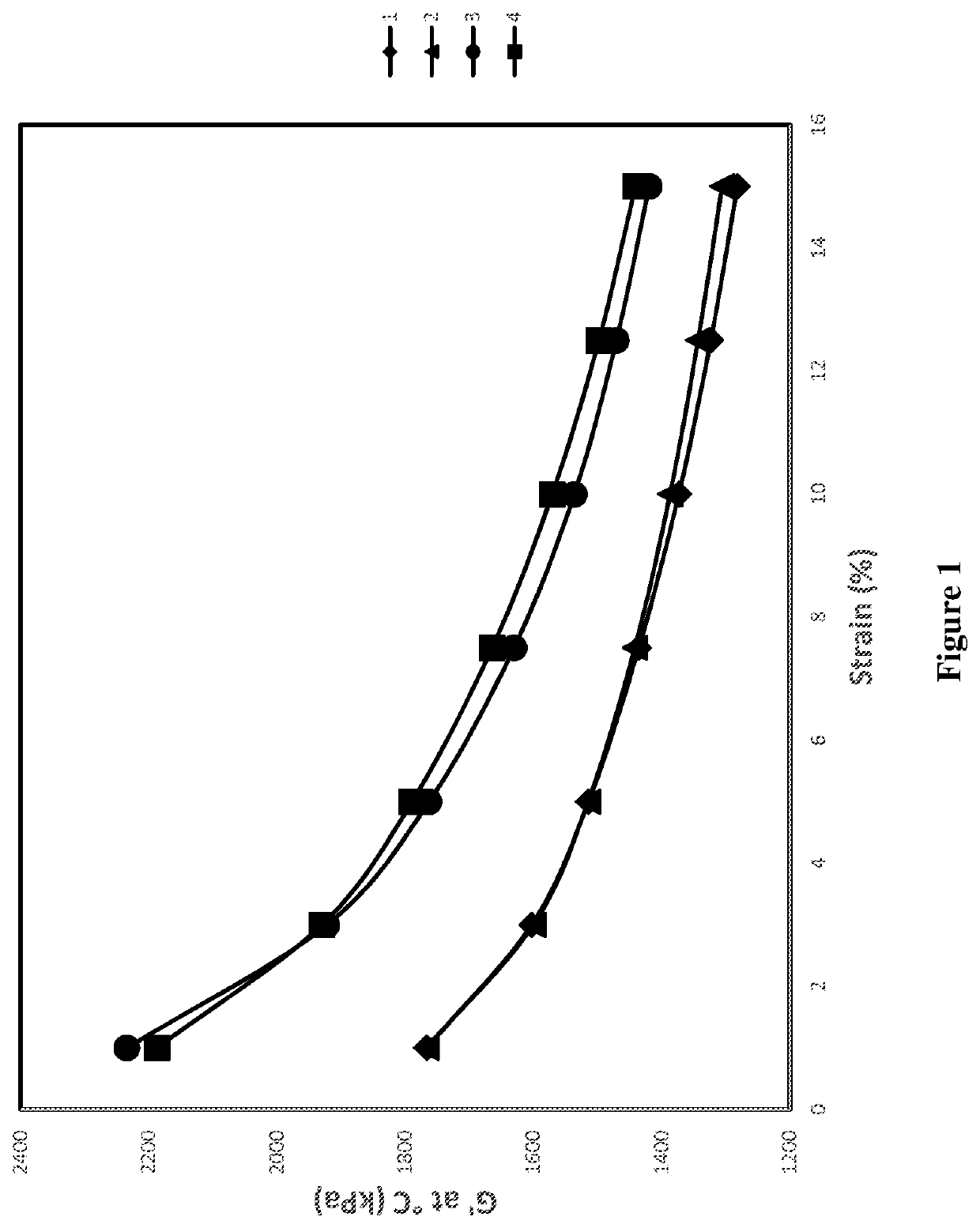Functionalized polymer, rubber composition and pneumatic tire
a technology of functionalized polymers and rubber compositions, applied in the field of functionalized polymers, to achieve the effects of improving the affinity of fillers, improving the interaction of polymer/filler, and low cos
- Summary
- Abstract
- Description
- Claims
- Application Information
AI Technical Summary
Benefits of technology
Problems solved by technology
Method used
Image
Examples
example 1
[0083]In this example, the preparation of functionalized and non-functionalized polybutadiene with a neodymium catalyst is illustrated.
[0084]Premade neodymium catalyst was prepared by reacting butadiene premix (15% w / w, 40 equiv.), triisobutylaluminum (25% w / w, 20 equiv.), and neodymium(III) versatate (0.5 M, 1.0 equiv.). The mixture was agitated for 30 minutes. Diethylaluminum chloride (25% w / w, 2.5 equiv.) was then added and the reaction mixture was allowed to stand at room temperature.
[0085]To prepare a functional rubber (Samples 1 and 2): To a 10 gallon reactor was added butadiene premix (12.34% w / w, 30 lbs), premade neodymium catalyst (0.20 mmol per hundred monomer) and triisobutylaluminum (25% w / w, 25 equiv.). The reactor was heated to 65° C. and contents were stirred at temperature for 60 minutes. The reaction was terminated with boron terminator (˜5 equivalents per chain end) according to Table 2 and stirred at 65° C. for 1 h. Following this, water (100 parts per hundred mon...
example 2
[0089]The functionalized and non-functionalized polybutadienes of Example 1 (Samples 1 and 2) as well as control (Sample 3) and a comparative neodymium catalyzed polybutadiene (Sample 4) were used to make rubber compounds.
[0090]Rubber compounds were mixed in a 3-piece 360 mL CW Brabender® mixer equipped with Banbury® rotor. Each rubber sample was mixed with additives in a three stage mix procedure as shown in Table 3, with all amounts given in parts by weight, per 100 parts by weight of elastomer (phr). In the first non-productive mix stage, compounds were mixed for 4 minutes at 100 rpm using 120° C. as starting temperature. All compounds were milled to a thick sheet before a productive mix stage. Productive mixes were carried out using 60° C. starting temperature and 60 rpm with mix time of 3 minute.
[0091]The compounds were tested for rheology properties using an RPA 2000® from Alpha Technology. The compounds were cured at 160° C. for 20 minutes at the lowest possible strain (0.7%)...
PUM
| Property | Measurement | Unit |
|---|---|---|
| temperature | aaaaa | aaaaa |
| temperature | aaaaa | aaaaa |
| temperature | aaaaa | aaaaa |
Abstract
Description
Claims
Application Information
 Login to View More
Login to View More - R&D
- Intellectual Property
- Life Sciences
- Materials
- Tech Scout
- Unparalleled Data Quality
- Higher Quality Content
- 60% Fewer Hallucinations
Browse by: Latest US Patents, China's latest patents, Technical Efficacy Thesaurus, Application Domain, Technology Topic, Popular Technical Reports.
© 2025 PatSnap. All rights reserved.Legal|Privacy policy|Modern Slavery Act Transparency Statement|Sitemap|About US| Contact US: help@patsnap.com



